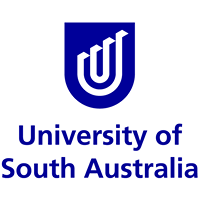Brief description
This software tool (in Microsoft Excel) 'Irrigation water quality and quantity for covered crops' (or 'IW-QC2') was developed for application by water resource managers and the horticulture industry to facilitate decision-making on water resource selection, water storage capacities and quality of blended supply water. This time series climate-based modelling tool developed to assess the quantity and quality of irrigation water management options that can be achieved by blending of different water sources. These include harvested stormwater, recycled water, local river and ground waters. This tool was initially developed for soil-based greenhouse crops (i.e. tomato, cucumber, capsicum and eggplant) commonly grown in the NAP region but can be modified to include other covered crops. The modelled surface water supply availabilities (volumes and quality) can be calculated from historical climate data or future climate predictions. Predicted volumes of water that could be harvested from the greenhouse roofs (with user selected climate models) can be used when it is available (during the wet season) to minimize the water storage requirements or can be stored and used to blend with other water sources to achieve fit-for purpose water qualities (e.g. TDS level) during a specific growth stage of a crop. Two modelling scenarios were developed for harvested roof runoff 1) use when available and 2) storage and reuse when needed to achieve target water quality within a blended water supply. IW-QC2 tool output includes the determination of the amount and quality of irrigation blended waters for soil-based crops and when desalination (reverse osmosis, RO) is required, based on the trigger values for TDS and chloride concentrations for irrigation water.
Existing data was sourced from:
local :
DSET_EXISTING_DATA
Yes. This software tool (in Microsoft Excel) 'Irrigation water quality and quantity for covered crops' (or 'IW-QC2') was developed for application by water resource managers and the horticulture industry to facilitate decision-making on water resource selection, water storage capacities and quality of blended supply water.
This time series climate-based modelling tool developed to assess the quantity and quality of irrigation water management options that can be achieved by blending of different water sources. These include harvested stormwater, recycled water, local river and ground waters. This tool was initially developed for soil-based greenhouse crops (i.e. tomato, cucumber, capsicum and eggplant) commonly grown in the NAP region but can be modified to include other covered crops. The modelled surface water supply availabilities (volumes and quality) can be calculated from historical climate data or future climate predictions. Predicted volumes of water that could be harvested from the greenhouse roofs (with user selected climate models) can be used when it is available (during the wet season) to minimize the water storage requirements or can be stored and used to blend with other water sources to achieve fit-for purpose water qualities (e.g. TDS level) during a specific growth stage of a crop. Two modelling scenarios were developed for harvested roof runoff 1) use when available and 2) storage and reuse when needed to achieve target water quality within a blended water supply. IW-QC2 tool output includes the determination of the amount and quality of irrigation blended waters for soil-based crops and when desalination (reverse osmosis, RO) is required, based on the trigger values for TDS and chloride concentrations for irrigation water.
The following software (and version) was used to generate or capture the data:
local :
DSET_SW_DATA_CAPTURE
Microsoft Office 365
The following instruments/equipment were used to generate or capture the data:
local :
DSET_INST_DATA_CAPTURE
NA
The following software (and version) was used to analyse the data:
local :
DSET_SW_DATA_ANALYSIS
NA
Data time period: 03 2017 to 31 03 2019
User Contributed Tags
Login to tag this record with meaningful keywords to make it easier to discover
- Local : research.unisa.edu.au/dataset/643795
- URI : researchoutputs.unisa.edu.au/11541.1/6e7a0f8ef15d48449e8ee45a2e286d3e



